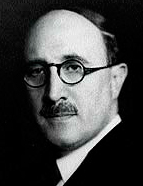

Claudio Sánchez-Albornoz was born in Madrid on 7 April 1893, as his father was sworn in as a deputy to the Courts that same week. However, he was raised in Ávila, where his family had a distinguished political legacy throughout the 19th century. His great-great-grandfather, for instance, had collaborated with Juan Álvarez Mendizábal (1790-1853), a key figure in the Spanish liberal revolution, while his great-uncle, Lucio Sánchez Albornoz, was removed from his position as "regidor" of the city for refusing to swear allegiance to the 1869 Constitution. Throughout his childhood and teenage years, CSA inherited countless stories from his bourgeois family, initially revolutionary and later conservative. He remarked that he could write "the outline" of the history of 19th-century Spain based solely on conversations with his great-grandmother. A testament to the impact of these stories on his development is the first essay he published at just eighteen, titled "Ávila desde 1808 hasta 1814" [Ávila from 1808 to 1814]. This family environment, combined with growing up reading Court session minutes that filled part of the bookshelves in his parents' home, steered him towards a career in law. However, in 1911, he met Eduardo de Hinojosa y Naveros (1852-1919), a researcher specializing in the Germanic foundations of Spanish Law and the medieval history of the Iberian Peninsula, who was greatly influenced by German historiography, and who encouraged him to study History. The Centro de Estudios Históricos [Centre for Historical Studies] had just been established as part of the Institución de Libre Enseñanza [Institution for Free Education] programme, under the direction of Ramón Menéndez Pidal. This Centro and its members would be instrumental in shaping CSA's development.
CSA's academic career progressed at a remarkable pace: he completed his bachelor's degree in 1913 and earned his doctorate in 1914 from the Universidad Central [Central University]. In 1915, he became a member of the Archiveros, Bibliotecarios y Arqueólogos [Archivists, Librarians and Archaeologists], served as a professor at the University of Barcelona in 1918, and, starting in 1920, at the Universidad Central. Prior to this, he had also taught at the University of Valladolid. In 1921, at the suggestion of Ramón Menéndez Pidal, he decided to enter a national competition on institutions in the Kingdom of Asturias with a work — unpublished to this day — titled Historia del Reino de Asturias y de sus Instituciones [History of the Kingdom of Asturias and its Institutions]. To prepare for his research, he visited numerous archives and compiled files that would serve as the foundation for much of his later work. The Iberian High Middle Ages — the formative period of the Asturian-Leonese and Castilian kingdoms — became both the starting point and central reference for his research in which he highlighted the enduring influence of these centuries on later periods, not only in the medieval era but also in modern and contemporary times, as well as its importance for understanding the origins and development of Iberian institutions, a theme that underpinned much of his work. Directly connected to these topics, shortly after receiving the competition prize in 1924, CSA was part of the team that founded the Anuario de Historia del Derecho Español [Yearbook of the History of Spanish Law]. The publication, divided into four sections — articles on the history of Spanish, Muslim, and Spanish-American law, documents, bibliography, and 'Varia' — was led by Eduardo de Hinojosa's disciples and drew inspiration from French and German models. The first issue featured texts by various foreign experts, including Ernest Mayer and Paulo Merêa, among others. Although CSA was listed as the editorial secretary in the Anuario como secretario de redacción , he was the driving force behind the magazine from the outset and, from 1928, served as its lead editor.
This work is financed by national funds through FCT - Foundation for Science and Technology, I.P, in the scope of the projects UIDB/04311/2020 and UIDP/04311/2020.
